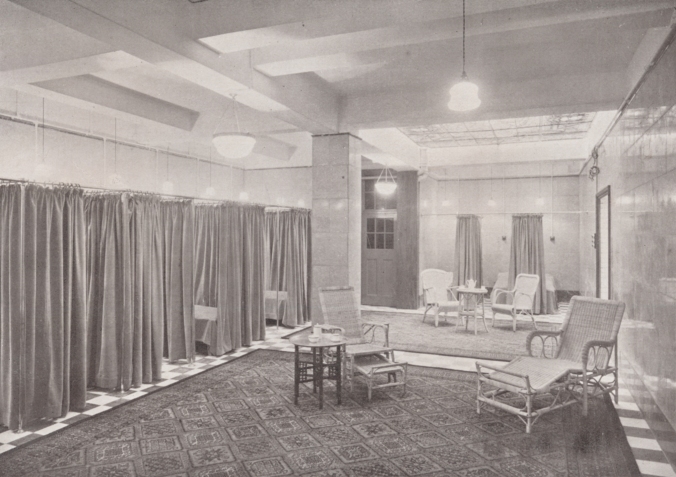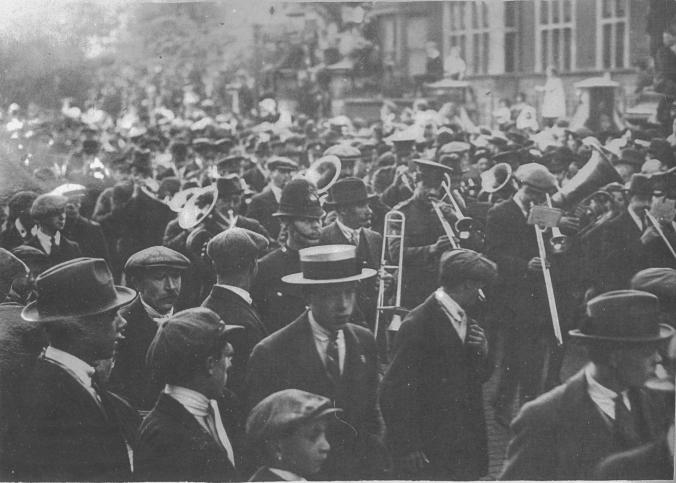By Patricia Dark, Archivist at the Southwark Local History Library and Archive
This is the fifth post in a series exploring ways to find out more about the part your family, school, workplace, or neighbourhood played in the First World War.
The First World War was the first truly global war, and you may be looking for someone who lived in the wider British Empire, one of the Allied countries, or in one of the Central Powers who fought on the opposite side of the war. Many of the important points discussed in the second part of this series – major types of heritage organisations, digitisation of primary sources, and the challenges of using historic records – are true for records relating to the experiences of people in the Empire, Allied nation, or the Central Powers. You will also usually need to know the same basic and specific information, like full name and date of birth, service number, date(s) and place(s) of service, as you would to find British military personnel or civilians.
However, there are some challenges unique to using foreign records. In order to use undigitised foreign records, you will need to travel abroad or hire a local researcher to consult them for you – this includes many Commonwealth countries, who took responsibility for service records on achieving independence. Language may also be a challenge, both in terms of accessing documents and finding a local researcher. Finally, not all countries hold military service records in a central archive. This means that you will need to know where the person you’re interested in enlisted – and may need to travel to the appropriate regional archive to do research.
British Empire Forces

When the First World War started in 1914, Britain administered a world-spanning empire (whose symbolic successor is the Commonwealth). Australia, Canada, Newfoundland, New Zealand, and South Africa were self-governing units known as Dominions: each Dominion had its own legislature and made local laws, but the UK controlled their international relations. India had a more complicated system that was, in practice, similar to Dominion status; for this reason, all six of these states entered the war in August 1914. Colonies in Africa, Asia, and the West Indies had more limited self-government, and their casualties were accounted with that of UK forces.
Since the Commonwealth War Graves Commission (CWGC) has a Commonwealth-wide remit, you should be able to find troops from all over the empire in its database of war dead; however, it’s important to note that men from the colonies are included under “United Kingdom forces”, Newfoundlanders under “Canadian”, and all troops from the Indian subcontinent under “Indian”. The Imperial War Museum (IWM) also has a Commonwealth-wide remit, and you can find details of those who served with imperial forces on the Lives of the First World War website.
Australia, Canada, New Zealand, India, and South Africa also have their own war museums (not all founded in the immediate aftermath, however); similarly the website Soldiers of the First World War provides access to digitised service records for Canadian and Newfoundlander troops; Discovering Anzacs, the AIF Project, and New Zealand Anzacs in the Great War do the same for Australian and New Zealander service records. Indian Army records for the time are generally at the British Library, and are not available online. You can also find some Indian Army unit diaries at the National Archives’ Operation War Diary website. South African records are available through the South African National Defence Force Documentation Centre; records of the King’s African Rifles, a unit based in Kenya, are available at the National Archives.
Allied Forces
Records of “doughboys” – American military personnel of the First World War, who joined the war in 1917– are held by the American equivalent of TNA, the National Archives and Records Administration (NARA). They were badly affected by a catastrophic fire at the National Personnel Records Center in St Louis, MO, in 1973: many of the surviving records are available on Ancestry or Family Search. The American Battle Monuments Commission (ABMC) is the equivalent of the CWGC, and its website allows you to search for burials in American military cemeteries. It’s important to note that, in contrast to British policy, American policy gave bereaved families the choice of whether or not to inter war dead in battlefield cemeteries. This means many American war dead are buried in their hometowns, and so don’t necessarily appear on the ABMC database. You may also find useful information on the website of the American National World War I Museum.
In France, the Ministère de la Defense (the Ministry of Defense) is in charge of service records, while the Ministère des Pensions (the Ministry of Pensions) is the official war graves agency. For poilus – French military personnel of the First World War – the Memoire des Hommes website provides access to digitised military and war graves records. Some of its background material and database fields are in English, but most of its results are in French and may require knowledge of that language to use.
Italy also fought on the side of the Allies in World War I. Service records there are held at regional centres, and most are not digitised; you can find more information on how to access them at Family Search. Russian records are particularly challenging to use: records are scattered, fragmentary, and generally not online. To make use of them, you will need to have good knowledge of Russian and read Cyrillic. One place to start is the World War I project of the Russian genealogical society Союз Возрождения Родословных Традиций (Union Revival Bloodlines Traditions, SVRT).
Central Powers forces
If you are searching for an ancestor who was in the military forces of the Central Powers, the situation is more complicated. At the end of the war, the Austro-Hungarian and Ottoman Empires broke into pieces; like British colonies, the military records of different newly-independent areas became the successor states’ responsibility. Many of these nations also hold military records on a regional, not national, basis; many of these records were lost in the bombings of the Second World War, and relatively few of them are online.
Ottoman service records are likely to be held by the archives of the Türkiye Cumhuriyeti Millî Savunma Bakanlığı (Republic of Turkey Ministry of National Defense). These records are likely to be very difficult to use unless you are familiar with Ottoman Turkish and its Arabic-based script.
Service records of the Austro-Hungarian Empire (which included modern Austria, Hungary, the Czech Republic, Slovakia, Croatia, Slovenia, and parts of Poland, Romania, Italy, Ukraine, Moldova, Serbia, and Montenegro) are held regionally; the vast majority of them are handwritten in German. The Österreichisches Staatsarchiv (Austrian State Archives) leaflet on military genealogy (in English) contains an overview of resources available at the Kriegsarchiv Wien (Vienna War Archives), as well as contact details for regional archives. The Österreichisches Schwarzes Kreuz (Austrian Black Cross) is the equivalent of the CWGC: you can make a research request for information on an Austrian war grave. The Hungarian equivalent of the Kriegsarchiv Wien is the Hadtörténelmi Levéltár (Hungarian Military History Archives) in Budapest: its website is entirely in Hungarian.
Many German service records for the First World War did not survive the 1945 destruction of the Prussian military archive, in Potsdam, near Berlin; however, records for some semi-autonomous German forces (Bavaria, Saxony, and Baden-Württemberg) are held at regional archives. Ancestry provides online access to Bavarian service records, and the Generallandesarchiv Karlsruhe (General state archive, Karlsruhe) provides digital copies of service records for Baden-Württemberg. You may also find useful information on the First World War centenary website of the Bundesarchiv (German federal archive), including their introduction to military genealogy leaflet (German language only). The website of the Volksbund Deutsche Kriegsgräberfürsorge (German War Graves Commission), the German equivalent of the CWGC, allows you to search for a soldier buried in a German war cemetery.
This is the final post in a series exploring ways to research the First World War.
 ‘Silent Raid’ is a series of house sculptures commissioned to commemorate the people and places impacted by a WWI Zeppelin bomb that landed on Calmington Road, which once stood where Burgess Park is located today.
‘Silent Raid’ is a series of house sculptures commissioned to commemorate the people and places impacted by a WWI Zeppelin bomb that landed on Calmington Road, which once stood where Burgess Park is located today.

















 Millions of men – and thousands of women – served king and country in uniform during the First World War. Men served in the
Millions of men – and thousands of women – served king and country in uniform during the First World War. Men served in the  The most important of these other records is his or her service record, which may contain details of rank and regiment, promotion, moves between units, evaluations from superiors, next of kin, pension, or medical status. The Silver War Badge, noted in the campaign medal records, was awarded to all military personnel released from service due to war-related injury or sickness; if your tommy received one,
The most important of these other records is his or her service record, which may contain details of rank and regiment, promotion, moves between units, evaluations from superiors, next of kin, pension, or medical status. The Silver War Badge, noted in the campaign medal records, was awarded to all military personnel released from service due to war-related injury or sickness; if your tommy received one, 


 If you are interested in discovering more about an individual’s service, or what happened in your community, during the First World War, you will most likely need to study surviving records or artefacts from the period. These are usually held in heritage institutions like archives and museums – there are lots of different types, but we describe some of the most useful below (we’ll look at non-UK sources later in this series).
If you are interested in discovering more about an individual’s service, or what happened in your community, during the First World War, you will most likely need to study surviving records or artefacts from the period. These are usually held in heritage institutions like archives and museums – there are lots of different types, but we describe some of the most useful below (we’ll look at non-UK sources later in this series).



 100 years ago, our ancestors would have known the First World War as simply the “Great War”. It changed the lives of almost every family in Britain, and around the world. Men and women saw active duty as military personnel – in the slang of the time, a “tommy” – or served as civilians in medical aid units overseas or working on the home front. Millions of people were taken prisoner of war, interned as enemy civilians, or fled their homes as refugees.
100 years ago, our ancestors would have known the First World War as simply the “Great War”. It changed the lives of almost every family in Britain, and around the world. Men and women saw active duty as military personnel – in the slang of the time, a “tommy” – or served as civilians in medical aid units overseas or working on the home front. Millions of people were taken prisoner of war, interned as enemy civilians, or fled their homes as refugees.
